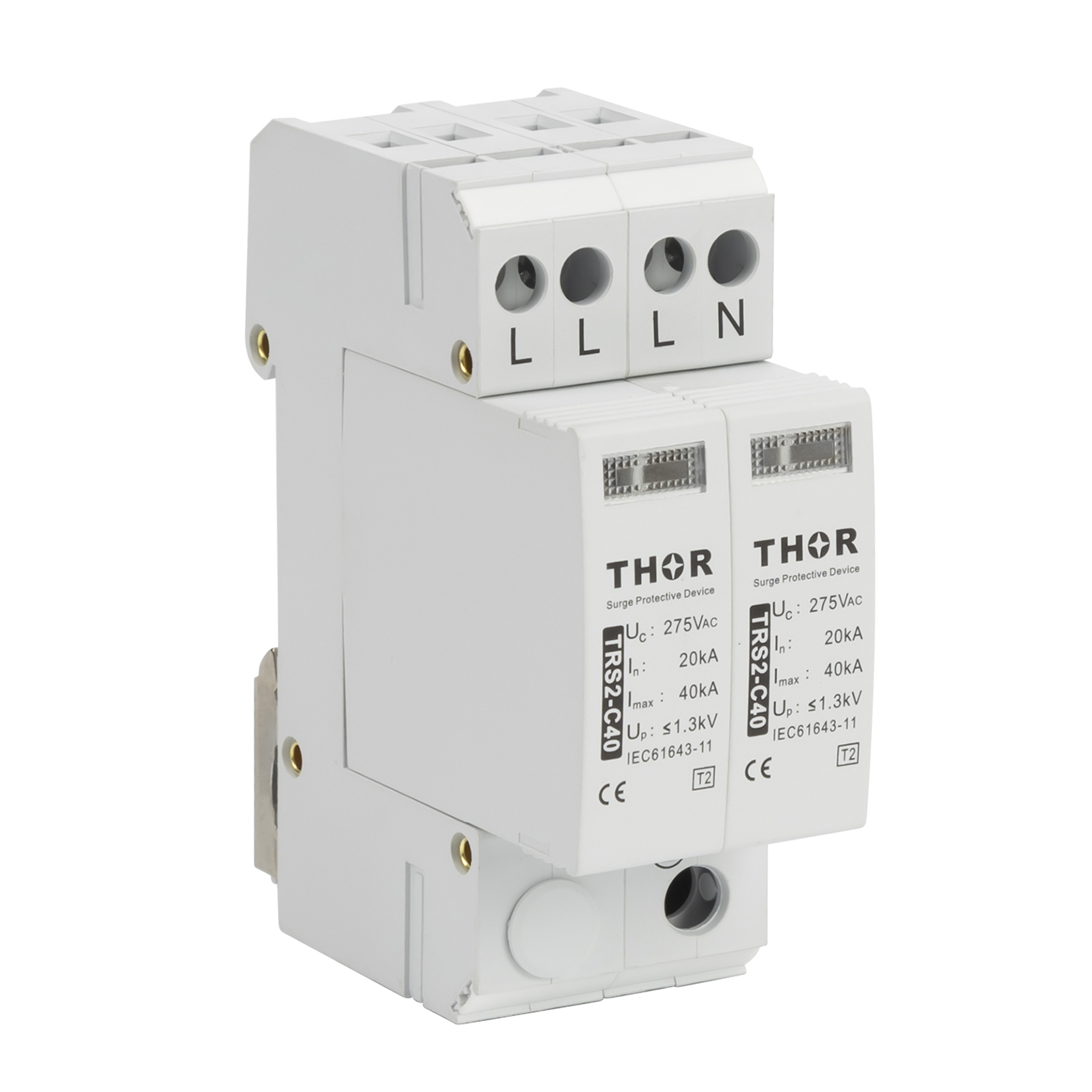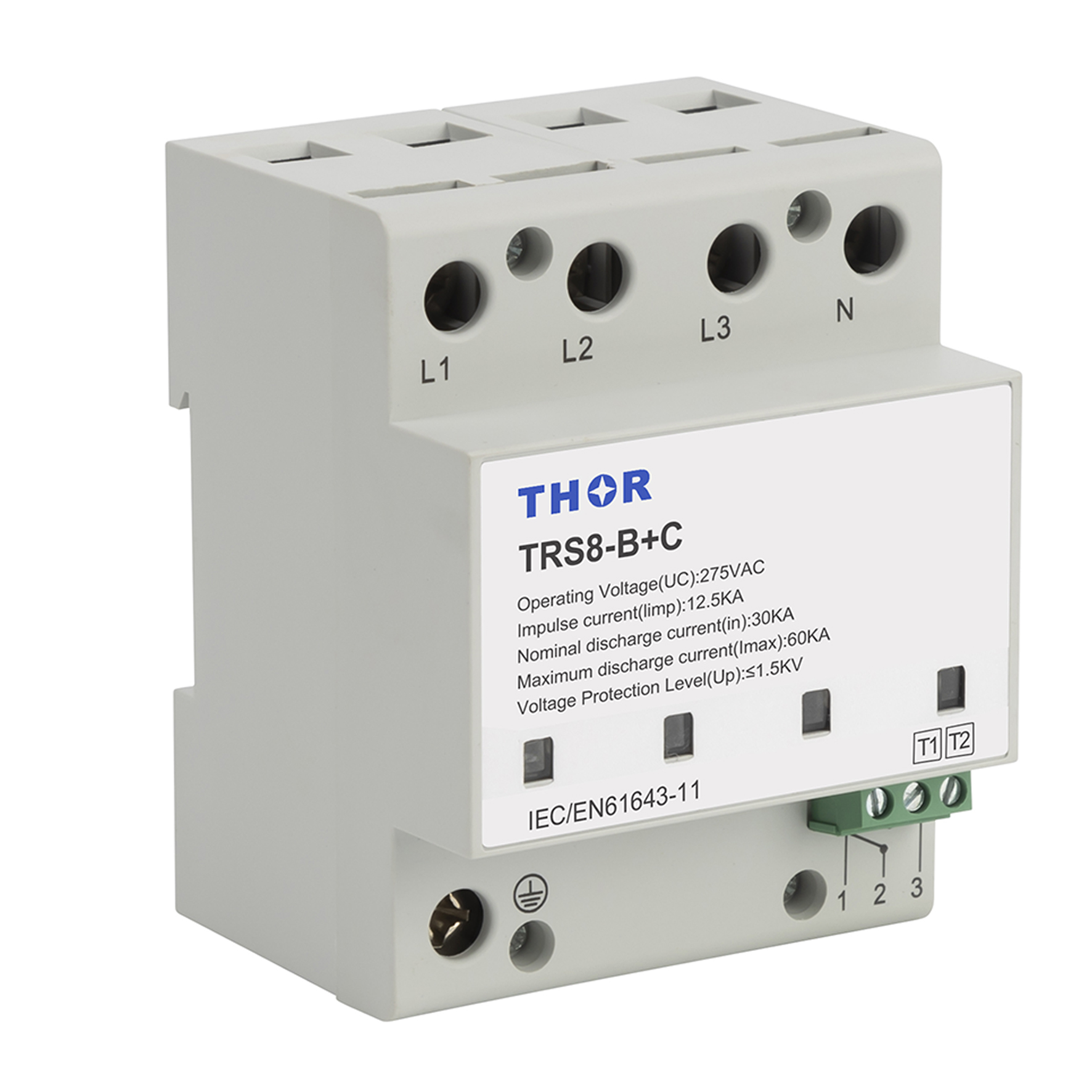It depends on the type and design of a certain device. Some really high-end appliances, like smart TVs and inverter air conditioners, do have some sort of basic surge protection circuits onboard, while most other regular appliances do not have a complete SPD inside them and still require external protection to minimize the chances of damage. According to the IEEE C62.41.1-2020 standard, more than 60% of appliance damage is surge-related; 75% of surges originate from the appliances' own load switching operations rather than from external lightning strikes or grid abnormalities.
What is a Surge?
A surge is an abnormal voltage or current spike on the power grid within a very short period, which generally will be in the nanosecond to millisecond time frames. Surges can be broadly categorized into three categories based on the IEEE C62.41.2-2020:
-
Surges of Lightning: The stroke of the lightning creates instant surges in current in the range of 30kA to 200kA, while peak voltage shoots as high as 50kV. While there are roughly 25 million lightning strikes across the U.S. every year, as obtained by the U.S. NOAA, about 5% eventually give rise to transient shocks over building electrical grids.
-
Switching Surge: A switching surge could be developed from turning on and off high power consuming devices or loads, for example, air conditioners, refrigerators, and big industrial motors. Common surge magnitude: 600V to 2000V. Surges due to switching the load make up more than 60% in all surges in commercial buildings.
-
Utility Switching Transients: Momentary overvoltages due to grid switching of a power company, switching of transformers, and/or failing cables; possible fluctuation in voltage up to ±10% to 20%.
Do Appliances Have Built-in Surge Protection?
Different types of appliances have greatly varying levels of surge protection. Appliances available in the market can be segregated generally as follows:
| Appliance Category | Built-in Surge Protection? | Typical Protection Level (Surge Voltage Tolerance) |
|---|---|---|
| Computers, Servers | Yes (some models) | 800V~1200V |
| Smart TVs, Audio Systems | Partial | 500V~800V |
| Refrigerators, Air Conditioners | Partial (high-end models) | Up to 1000V |
| Washing Machines, Microwaves | No | 250V~400V |
| Power Tools, EV Chargers | Yes | Up to 2000V |
Some smart appliances, such as inverter air conditioners and smart TVs, have MOV and TVS diodes capable of suppressing surges from 600V to 1200V. However, according to the UL1449 standards, the MOV components can only take 50 to 100 surges at the level of 1000V, and after degradation, their protection capability drops substantially

Limitations of Built-in Surge Protectors
Even though some appliances have internal surge protection components, these components can only protect your appliances to an extent. An example is varistors—the most common kind of surge protective component in appliances—but their effectiveness degrades with time.
By itself, a MOV degrades—for example—20% after 50 surges under a 1000V surge and maybe completely fails with just 10 surges if the surge has an amplitude of 2000V. And so, for appliances having these built-in as surge protectors, such component effectiveness diminishes over a quite long time following use.
Besides, surge protection built into appliances is normally tailored to their internal circuits and won't prevent surges from propagating to other appliances into the power grid. For example, if there is a high-power air conditioner that creates a surge of 1200V at startup, it may affect devices such as TVs, audio systems, and routers connected through the same power outlet through transient voltage.
Industrial Application
Nowadays, surge protection has been widely applied in industrial automation, medical equipment, telecommunication, and railway transportation. Such as data center server protection against lightning surges, the usual installation rating is above 100kA; hospitals take 50kA-rated SPDs to avoid voltage fluctuations that may make MRI or CT equipment lose their image quality or even worse, data.
In contrast, the surge protection levels are relatively low in the home appliance industry. Only some high-end smart appliances adopt industrial-grade SPD designs. For instance, some smart refrigerators use 10kA-rated MOVs to protect their electronic control boards, but this is far from industrial standards.
| Industry | Typical SPD Configuration | Surge Current Capacity (Imax) |
|---|---|---|
| Industrial Automation | 40kA~100kA SPD | Power grid protection (380V) |
| Medical Equipment | 10kA~50kA SPD | Precision equipment protection |
| Data Centers | 100kA~200kA SPD | Server protection |
| Railway Transportation | 50kA~150kA SPD | High-speed rail power protection |
Why Are Surge Protectors Necessary?
Appliances require external surge protection devices, as their built-in protections are usually incapable of withstanding extreme surge events. According to the IEEE 1100-2005 standard, household appliances have a 30% chance of failure from lightning surges in thunderstorm-prone areas, while this rate may exceed 50% in regions with unstable power grids.
For costly appliances like OLED TVs (which cost upwards of $500 to repair); high-end audio systems with single amplifier modules costing upwards of $300; and central air conditioners with control board replacements upwards of $800, one surge could mean hundreds, if not thousands, of dollars in repair costs. An SPD costing $50 to $200 will go a long way in minimizing the risk of surge damage and prolonging the life of appliances. In homes with SPDs installed, appliance surge failure rates drop by over 80%. For rural locations, or those with unstable power grids, SPDs are almost a necessity.

Picking the Perfect Surge Protector
The selection of an appropriate SPD depends on appliance type, power environment, surge levels, installation location, and SPD surge current capacity (Imax). The SPDs of higher ratings at 40kA or above are recommended to be installed for high-end appliances, and for further protection, outlet-level SPDs should also be used.
| SPD Type | Application | Surge Current Capacity (Imax) |
|---|---|---|
| Outlet-Level SPD | Personal electronics: PC, TV | 10kA~20kA |
| Panel-Level SPD | High-end appliances: AC, refrigerator | 40kA~80kA |
| Industrial SPD | High-risk environments: data centers, medical | 100kA~200kA |
For SPD installation, the ground resistance should be kept strictly below 5Ω, ensuring surge currents dissipate properly to maintain their effectiveness. A multi-level protection approach is recommended, involving a main panel SPD at the electrical panel and secondary outlet SPDs for critical appliances, forming a comprehensive surge protection system.
